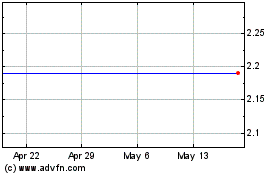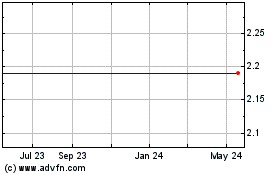UNITED STATES
SECURITIES AND EXCHANGE COMMISSION
Washington, D.C. 20549
FORM 8-K
CURRENT REPORT
Pursuant to Section 13 or 15(d) of the Securities Exchange Act of 1934
Date of Report (Date of
earliest event reported): November 12, 2009
Merix Corporation
(Exact name of registrant as specified in its charter)
|
|
|
|
|
|
|
Oregon
|
|
1-33752
|
|
93-1135197
|
|
(State or other jurisdiction
of incorporation)
|
|
(Commission File Number)
|
|
(IRS Employer
Identification No.)
|
|
|
|
|
|
15725 SW Greystone Court
Suite 200
Beaverton, Oregon
|
|
97006
|
|
(Address of principal executive offices)
|
|
(Zip Code)
|
Registrant’s telephone number, including area code: (503) 716-3700
N/A
(Former name or former address if changed since last report.)
Check the appropriate box below if
the Form 8-K filing is intended to simultaneously satisfy the filing obligation of the registrant under any of the following provisions:
|
x
|
Written communications pursuant to Rule 425 under the Securities Act (17 CFR 230.425)
|
|
¨
|
Soliciting material pursuant to Rule 14a-12 under the Exchange Act (17 CFR 240.14a-12)
|
|
¨
|
Pre-commencement communications pursuant to Rule 14d-2(b) under the Exchange Act (17 CFR 240.14d-2(b))
|
|
¨
|
Pre-commencement communications pursuant to Rule 13e-4(c) under the Exchange Act (17 CFR 240.13e-4(c))
|
The
description of the legal proceedings appearing in Item 1 of Part II of the Quarterly Report on Form 10-Q for the quarter ended August 29, 2009 of Merix Corporation (“Merix”) is updated as follows:
Securities Class Action
—Four purported class action complaints were filed against us and certain of our executive officers and
directors on June 17, 2004, June 24, 2004 and July 9, 2004. The complaints were consolidated in a single action entitled
In re Merix Corporation Securities Litigation
, Lead Case No. CV 04-826-MO, in the U.S. District Court
for the District of Oregon. After the court granted our motion to dismiss without prejudice, the plaintiffs filed a second amended complaint. That complaint alleged that the defendants violated the federal securities laws by making certain
inaccurate and misleading statements in the prospectus used in connection with the January 2004 public offering of approximately $103.4 million of our common stock. In September 2006, the Court dismissed that complaint with prejudice. The plaintiffs
appealed to the Ninth Circuit. In April 2008, the Ninth Circuit reversed the dismissal of the second amended complaint. We sought rehearing which was denied and rehearing en banc was also denied. We obtained a stay of the mandate from the Ninth
Circuit and filed a certiorari petition with the United States Supreme Court on September 22, 2008. On December 15, 2008, the Supreme Court denied the certiorari petition and the case was remanded back to the U.S. District Court for the
District of Oregon. On May 15, 2009, the plaintiffs moved to certify a class of all investors who purchased in the public offering and who were damaged thereby. On November 5, 2009, the court partially granted the certification motion and
certified a class consisting of all persons and entities who purchased or otherwise acquired our common stock from an underwriter directly pursuant to our January 29, 2004 offering, who held the stock through May 13, 2004, and who were
damaged thereby. The case is currently in the discovery phase. The plaintiffs seek unspecified damages. A potential loss or range of loss that could arise from these cases is not estimable or probable at this time.
Lawsuits Relating to our Proposed Merger
—We, our board of directors and Viasystems Group, Inc., a Delaware corporation
(“Viasystems”) are named as defendants in two putative class action lawsuits brought by alleged shareholders of the Company challenging our proposed merger with Viasystems. The shareholder actions were both filed in the Circuit Court of
the State of Oregon, County of Multnomah. The actions are called
Asbestos Workers Philadelphia Pension Fund v. Merix Corporation, et al.,
filed October 13, 2009, Case No. 0910-14399 and
W. Donald Wybert v. Merix Corporation, et
al.
, filed on or about November 5, 2009, Case No. 0911-15521. Both shareholder actions generally allege, among other things, that each member of our board of directors breached fiduciary duties to us and our shareholders by authorizing
the sale of us to Viasystems for consideration that does not maximize value to our shareholders. The complaints also allege that we and Viasystems aided and abetted the breaches of fiduciary duty allegedly committed by the members of our board of
directors. The shareholder actions seek equitable relief, including to enjoin the defendants from consummating the merger on the agreed-upon terms.
In addition, certain risk factors described below, appearing in Item 1A of Part II of Merix’ Quarterly Report on Form 10-Q for the quarter ended August 29, 2009, are updated below. The
following risk factors supplement the risk factors that have been previously disclosed in our filings made under the Securities Exchange Act of 1934, as amended. The risk factors listed below should be read in conjunction with the risk factors
disclosed in our Quarterly Report on Form 10-Q for the quarter ended August 29, 2009.
The caption “
Failure
to maintain good relations with minority investors in our China manufacturing facilities could materially adversely affect our ability to manage our Asian operations”
and accompanying risk factor are updated as follows:
“Failure to maintain good relations with a minority investor in our majority-owned China subsidiaries could materially adversely affect our
ability to manage our Asian operations.
“Currently, we have a PCB manufacturing plant in Huiyang and Huizhou,
China that are each operated by a separate majority-owned joint venture subsidiary of ours. A minority investor owns a 5% interest in the subsidiary that operates the Huiyang plant. The same minority investor owns a 15% interest in the subsidiary
that operates the Huizhou plant. The minority investor owns the buildings of the Huizhou facility and it leases the premises to the subsidiary. The minority investor is owned by the Chinese government and has close ties to local economic development
and other Chinese government agencies. In connection with the negotiation of its investments, the minority investor secured certain rights to be consulted and to consent to certain operating and investment matters concerning the plants and to
subsidiary’s board of directors that oversee these businesses. Failure to maintain good relations with the minority investor in either Chinese subsidiary could materially adversely affect our ability to manage the operations of one or more of
the plants.”
The risk factor under the caption “
A large number of our outstanding shares and
shares to be issued upon exercise of our outstanding options may be sold into the market in the future, which could cause the market price of our common stock to drop significantly, even if our business is doing well”
is updated as follows:
“We may, in the future, sell additional shares of our common stock, or securities convertible into or exercisable for
shares of our common stock, to raise capital. We may also issue additional shares of its common stock, or securities convertible into or exercisable for shares of its common stock, to finance future acquisitions. Further, a substantial number of
shares of our common stock are reserved for issuance pursuant to stock options. As of August 29, 2009, we had approximately 4.2 million outstanding options, each to purchase one share of its common stock, issued to employees, officers and
directors under our equity incentive plans. The options have exercise prices ranging from $1.60 per share to $67.06 per share. In addition, at the annual meeting of shareholders on October 7, 2009, our shareholders approved the 2009 equity
incentive plan covering an additional three million shares which may be issued pursuant to stock options grants or restricted stock awards. Currently outstanding options, as well as any issued in the future, could have a significant adverse effect
on the trading price of our common stock, especially if a significant volume of the options was exercised and the stock issued was immediately sold into the public market. Further, the exercise of these options could have a dilutive impact on other
shareholders by decreasing their ownership percentage of our outstanding common stock. If we attempt to raise additional capital through the issuance of equity or convertible debt securities, the terms upon which we will be able to obtain additional
equity capital, if at all, may be negatively affected since the holders of outstanding options can be expected to exercise them, to the extent they are able, at a time when we would, in all likelihood, be able to obtain any needed capital on terms
more favorable than those provided in such options.”
SIGNATURES
Pursuant to the requirements of the Securities Exchange Act of 1934, the registrant has duly caused this report to be signed on its behalf
by the undersigned hereunto duly authorized.
|
|
|
|
|
|
|
|
|
|
|
|
|
|
|
|
|
Merix Corporation
(Registrant)
|
|
|
|
|
|
|
Date: November 12, 2009
|
|
|
|
By:
|
|
/s/ Kelly E. Lang
|
|
|
|
|
|
|
|
|
|
Kelly E. Lang
|
|
|
|
|
|
|
|
|
|
Executive Vice President, Finance and
Chief Financial Officer
|
Merix (MM) (NASDAQ:MERX)
Historical Stock Chart
From May 2024 to Jun 2024

Merix (MM) (NASDAQ:MERX)
Historical Stock Chart
From Jun 2023 to Jun 2024
